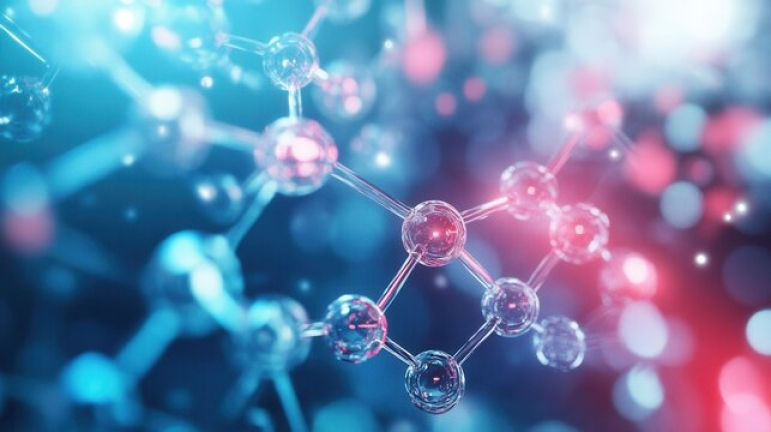What Is HCOOCH CH2 H2O? Demystifying the Notation
The term HCOOCH CH2 H2O appears ambiguous at first glance, but it represents a combination of three distinct chemical entities:
- Hcooch: Likely a shorthand for methyl formate (HCOOCH₃), an ester derived from formic acid and methanol.
- CH₂: A methylene group, acting as a reactive intermediate or structural bridge in organic molecules.
- H₂O: Water, the universal solvent.
Contrary to common misconceptions, HCOOCH CH2 H2O is not a single compound. Scientific databases like PubChem and Reaxys confirm no molecule with this formula exists. Instead, it symbolizes interactions in reactions like ester hydrolysis or transient aqueous systems.
Core Components: Roles and Properties
Formic Acid (HCOOH)
- Properties: Simplest carboxylic acid (46.03 g/mol), colorless, pungent odor, and miscible with water.
- Functions: Acts as a reducing agent, acid catalyst, and antibacterial preservative in leather taning and agriculture.
Methylene (CH₂)
- Forms:
- Methylene group(–CH₂–): A stable backbone in hydrocarbons (e.g., polyethylene).
- Carbene radical(·CH₂): A short-lived, highly reactive species for cyclopropanation or polymer synthesis.
Water (H₂O)
- Significance: Facilitates hydrolysis, hydration, and proton transfers. Critical in green chemistry for replacing toxic solvents.
Table: Key Properties of Components
| Component | Molecular Weight | Key Role | Industrial Use |
| Formic Acid (HCOOH) | 46.03 g/mol | Acid catalyst | Leather processing, fuel cells |
| Methylene (CH₂) | 14.03 g/mol | Reactive intermediate | Polymer synthesis |
| Water (H₂O) | 18.02 g/mol | Solvent/reagent | Hydrolysis, green chemistry |
Primary Reaction: Hydrolysis of Methyl Formate
The notation HCOOCH CH2 H2O often alludes to methyl formate hydrolysis:
HCOOCH₃ + H₂O → HCOOH + CH₃OH
This reaction exemplifies nucleophilic substitution, where water attacks the ester’s electrophilic carbon. Key factors include:
- Catalysts: Acid (e.g., HCl) or base (e.g., NaOH) accelerates the process.
- Kinetics: Rate constants reach ~16 L·mol⁻¹·s⁻¹ at 25°C, doubling with 10°C temperature increases.
- Mechanism:
- Protonation of ester carbonyl oxygen (acid-catalyzed).
- Nucleophilic attack by water.
- Cleavage into formic acid and methanol.
Industrial and Laboratory Applications
- Sustainable Chemical Synthesis
- Green Solvents: Methyl formate (from HCOOCH CH2 H2O systems) replaces chlorofluorocarbons in foam blowing and degreasing.
- Formic Acid Fuel Cells (FAFCs): HCOOH decomposes into H₂ and CO₂, providing clean energy with higher safety than hydrogen gas.
- Polymer and Material Science
- Methylene Bridging: CH₂ units link polymers like rubber, enhancing elasticity and thermal stability.
- Resin Production: Formic acid-water mixtures optimize pH during formaldehyde resin synthesis.
- Agricultural and Biological Relevance
- Silage Preservation: Formic acid inhibits microbial growth in animal feed.
- Enzymatic Hydrolysis: Esterases in metabolism mimic methyl formate breakdown under mild conditions.
Emerging Innovations and Research
- Carbon Capture and Utilization (CCU)
- Formic acid is synthesized from CO₂ hydrogenation, creating a circular carbon economy.
- Example: Catalysts like Pd-Au nanoparticles convert CO₂ to HCOOH at 90% efficiency.
- Advanced Catalysis
- Micellar Catalysis: Enables CH₂-based reactions in water, reducing organic solvent use.
- Continuous-Flow Reactors: Amberlyst resins boost hydrolysis yields by 40% via optimized mass transfer.
- Astrochemistry and Origins of Life
- Methyl formate (HCOOCH₃) is detected in interstellar clouds, hinting at prebiotic molecule formation in space.
Safety and Environmental Impact
- Hazards:
- Formic acid: Corrosive; causes skin burns (use gloves/goggles).
- Methyl formate: Flammable (handle in ventilated areas).
- Eco-Footprint:
- Biodegradability: Methyl formate hydrolyzes naturally in soil/water.
- Effluent Treatment: Neutralize acidic waste with bases before disposal.
Addressing Misconceptions
- “HCOOCH CH2 H2O is a real compound”: False. It’s a misinterpreted notation for reaction systems.
- “CH₂ exists freely”: Carbene (·CH₂) is transient; it must be generated in situvia photolysis or thermolysis.
- “Industrial relevance is limited”: In truth, these components enable textiles, biofuels, and pharmaceuticals.
Future Directions in Chemistry
- Bio-Based Production: Synthesizing formic acid from biomass (e.g., lignocellulose).
- Electrocatalysis: Converting CO₂ to HCOOH using renewable electricity.
- CH₂-Functionalized Materials: Designing polymers with tunable mechanical properties for aerospace.
Conclusion: Beyond the Notation
While HCOOCH CH2 H2O is not a valid compound, its components—methyl formate, methylene, and water—underpin transformative chemistry. From enzymatic hydrolysis to interstellar molecule detection, their synergy drives sustainable industry and scientific discovery. Understanding these interactions clarifies their role in green synthesis, energy innovation, and material design, proving that simplicity in chemistry often fuels complexity in application.
also read: What is C2H5OH? The Essential Guide to Ethanol

